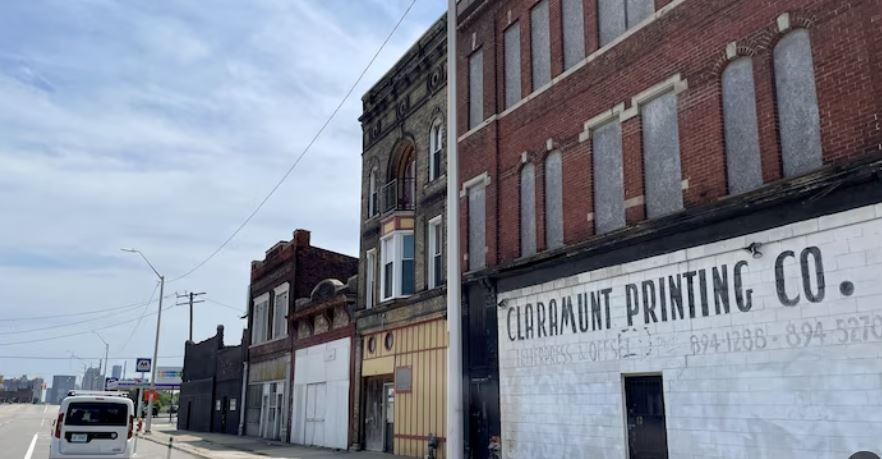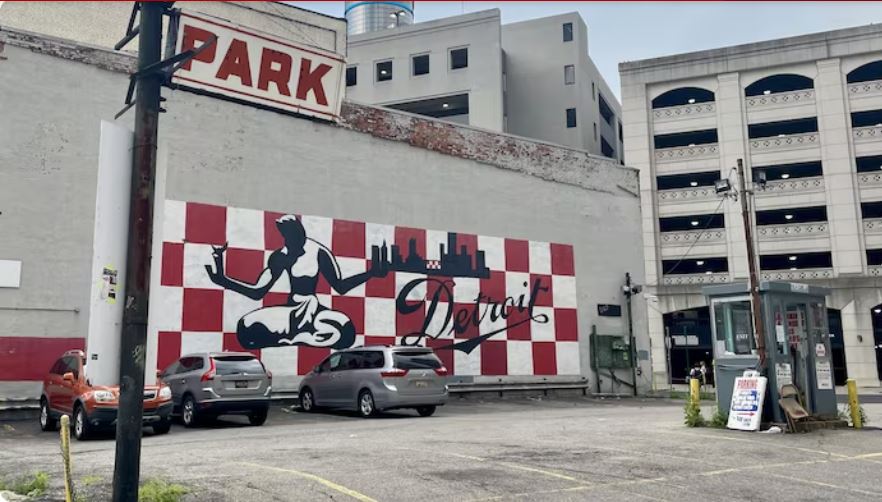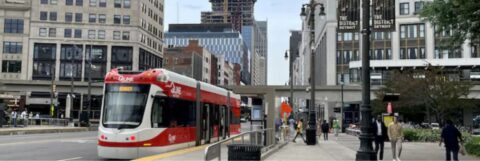Canadian Broadcasting Corporation (CBC)
July 18, 2023
Anne-Mare Trickey
“We have declared the largest municipal bankruptcy in US history! People didn’t understand why I was opening my bakery here,” says Good Cakes and Bakes co-owner April Anderson.
Her business opened in a northern district of the city in September 2013, just two months after the declaration of bankruptcy.
“We participated in the reconstruction of the city of Detroit,” says April Anderson, Co-owner of Good Cakes and Bakes.
In the past 10 years, Ms. Anderson has seen several changes near her cake factory: a bigger sidewalk for pedestrians, a new bike path, and an increasing number of businesses on her street.
“It wasn’t scary for us. It was rather a golden opportunity, because not only were we launching our business, but the city was already starting to rebuild itself”, explains the pastry chef.
An Untenable Situation
In the summer of 2013, the American automobile capital had a debt of more than 18 billion dollars, a veritable financial pit that it was simply unable to fill.
We had a billion dollar budget, two-thirds of which was for public safety. We couldn’t pay off that $18 billion in debt , says Kevyn Orr, who was named Michigan’s state emergency manager in March 2013.
At the time of his appointment, the lawyer by training did not believe that the Municipality should file for bankruptcy.
But it was the only option, according to the president of the Detroit Regional Chamber, Sandy K. Baruah.
“Debt over the years and the decline of the [automotive] industry and the economy in the region have placed the city in an untenable situation. Detroit couldn’t pay its bills,” he concludes.

RELATED: Baruah: Reflecting on the 10 Years Since Detroit’s Bankruptcy
The decision to declare bankruptcy was officially taken on July 18, 2013.
Several neighborhoods are then in disrepair. Houses are abandoned and buildings are falling apart. Detroit police also struggle to maintain public order.
Demonstrations, some of which are motivated by the feeling “of having been deprived of democracy,’ recalls Kevyn Orr, resound through the city.
In the streets march civil servants who do not want to lose their pension funds and people dissatisfied with the decision of the State to appoint an emergency manager in a municipal affair.
A decision that leads to a sometimes strained relationship between the City of Detroit and the state, according to Kevyn Orr.
“Work relations were distant at times, but rational behind the scenes. Everyone knew that we had to solve this problem so that the city could move forward,” argues the lawyer.
However, it was not until December 2014 that the City of Detroit officially emerged from the crisis . Then Mayor Mike Duggan, elected in 2013, will change the way people invest in neighborhoods across the city.

The city center, an important starting point
The heart of Detroit, its downtown, was the appropriate place to begin the revitalization of the city.
“[Downtown investments] helped create a level of trust in the city of Detroit and resulted in more funds being invested to make the city better than it ever was,” says Kevin Johnson, President of the Detroit Growth Corporation.
According to entrepreneur April Anderson, it was necessary to have a certain starting point.
“Five years ago, it was said that Detroit was a city with two faces, because there were forgotten neighborhoods, neighborhoods that did not develop, while it was the opposite downtown, she explains. But what people don’t understand is that to have an impact, you have to start on a smaller scale”, she says.
Revitalization has continued quietly in nearby neighborhoods such as Corktown, which has benefited from several public and private investments.
The auto company Ford bought the old Michigan Central Station in the neighborhood in 2018. This building, once considered a symbol of the decay of the city of Detroit, will become a center of innovation for Ford at the end of 2023.
According to Detroit Economic Growth Corporation President Kevin Johnson, Mayor Duggan’s goal was and still is to invest in every neighborhood in Detroit.
“Detroit is made up of its neighborhoods. If the neighborhoods are not benefiting from the efforts of our mayor and the City, then the investments that were seen downtown at the beginning of the process were rather empty,” he notes.
Some Problems Remain
Kevin Johnson indicates that, however, there is still work to be done in the outlying districts.
If their development is difficult, it is in particular because of the extent of the city, according to the professor of urban planning Carolyn Loh, of the University Wayne State, whose campus is in the center of the city.
“Detroit’s population is very dispersed. There are areas where people live more densely, but that’s not the case everywhere,” she explains.
“There are still huge challenges to overcome, such as the lack of public transport,” says Carolyn Loh, Urban Planner at Wayne State University.
All the work is not done, despite the progress, according to the professor.
“If you think about the city’s urban planning, there have been significant developments in several places in Detroit, but not everywhere. There is always a certain poverty that is geographically concentrated, where people are far from services and certain jobs,” she adds.
Detroit City Councilwoman Gabriela Santiago-Romero agrees.
Gabriela Santiago-Romero is a city councilor in Detroit. Originally from Mexico, she grew up in Detroit and was elected to the City Council in the last municipal election in November 2021.
“We are still facing the same problems as 10 years ago,” says City Councilor Gabriela Santiago-Romero.
“There is still a lack of municipal resources to meet the needs of the most marginalized communities, such as more public transport and access to drinking water at an affordable price, observes the councilor.”

For her part, April Anderson believes that the city of Detroit has certainly improved since the bankruptcy.
It’s a process that can take time, but if you’re patient, you can see the changes in Detroit, she points out.
April Anderson is also hopeful that in the next 10 years… not only her company, but also the city of Detroit will continue to progress.

